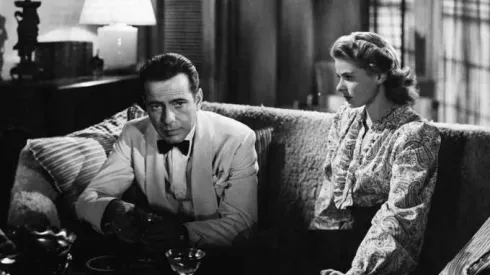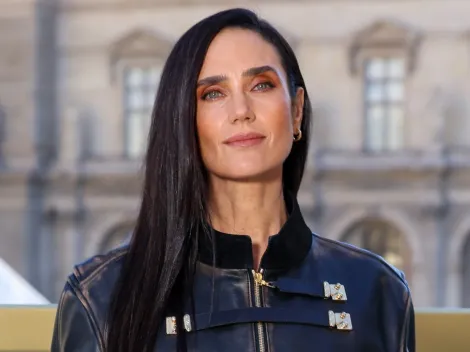In an era dominated by high-definition visuals and digital effects, black-and-white films may seem like relics of the past. Yet many of these early works continue to captivate viewers with their powerful narratives, strong direction, and enduring themes. These classics prove that great cinema does not rely on color or spectacle but on the strength of its story and characters.
Casablanca (1942)

IMDb
Michael Curtiz’s wartime romance remains one of the most quoted and beloved films in cinema history. Starring Humphrey Bogart and Ingrid Bergman, Casablanca blends political intrigue, love, and sacrifice with exceptional performances and sharp dialogue. Its themes of moral compromise and lost love remain strikingly relevant, while the closing scene is still considered one of the most iconic endings ever captured on film.
It’s a Wonderful Life (1946)

IMDb
Frank Capra’s holiday staple is more than just sentimental nostalgia—it’s a profound exploration of individual worth, sacrifice, and community. James Stewart gives one of his most enduring performances as George Bailey, a man brought to the brink before being shown the value of his life. Its message about the quiet impact of everyday kindness remains universally resonant, especially in an age of increasing social disconnection.
12 Angry Men (1957)

IMDb
A single jury room, twelve men, and the weight of justice. Sidney Lumet’s 12 Angry Men is a gripping, claustrophobic study of bias, reason, and moral courage. Filmed almost entirely in one setting, the movie’s strength lies in its dialogue and performances, particularly that of Henry Fonda. Its commentary on prejudice, civic duty, and the fragility of truth remains as vital today as it was in the 1950s.
Citizen Kane (1941)

IMDb
Often cited as the greatest film ever made, Citizen Kane introduced groundbreaking storytelling techniques, such as non-linear narrative and deep-focus cinematography. Orson Welles’s portrayal of Charles Foster Kane offers a nuanced critique of ambition, power, and the American Dream. With its layered narrative and stylistic innovations, the film continues to be studied in film schools around the world for good reason.
Psycho (1960)

IMDb
Alfred Hitchcock’s psychological thriller redefined horror and suspense with its innovative camera work and daring narrative choices. Even in black-and-white, the infamous shower scene is deeply disturbing, thanks to its rapid cuts and Bernard Herrmann’s screeching score. Psycho not only introduced audiences to the concept of the cinematic twist but also helped shape the modern horror genre in ways that continue to influence filmmakers today.
Manhattan (1979)

IMDb
Woody Allen’s love letter to New York City is a visual and emotional standout, shot in luminous black-and-white by cinematographer Gordon Willis. Blending romantic confusion with urban elegance, the film captures the contradictions of modern relationships and intellectual insecurity. While aspects of its plot have faced scrutiny in recent years, Manhattan remains a visually stunning work of cinematic artistry that defined a generation’s relationship with the city.
Strangers on a Train (1951)

IMDb
In this tense Hitchcock thriller, a casual conversation between two men on a train spirals into a deadly pact—one that examines guilt, duality, and the thin line between madness and calculation. With its bold cinematography and chilling antagonist in Robert Walker’s Bruno, Strangers on a Train maintains a slow-burning intensity that’s just as gripping for modern viewers. It’s a masterclass in suspense that set the standard for psychological thrillers.
Schindler’s List (1993)

IMDb
Steven Spielberg’s Holocaust epic is a haunting masterpiece that uses black-and-white cinematography to evoke the historical gravity of its subject matter. Liam Neeson stars as Oskar Schindler, a businessman who saves over a thousand Jews from Nazi extermination. The film’s use of muted visuals, broken only by selective color, such as the red coat of a child, intensifies its emotional and ethical weight. Decades later, Schindler’s List remains essential viewing and a powerful act of remembrance.
All Quiet on the Western Front (1930)

IMDb
One of the earliest and most powerful anti-war films, All Quiet on the Western Front delivers an unflinching look at the physical and psychological toll of World War I. Told from the perspective of German soldiers, the film strips away any notion of glory, replacing it with the brutal realities of trench warfare. Its stark black-and-white cinematography and raw emotional force still resonate deeply, nearly a century after its release.
The Apartment (1960)

IMDb
Billy Wilder’s Oscar-winning romantic dramedy blends biting social commentary with tender emotion, telling the story of an ambitious office worker who lends out his apartment to philandering executives. Jack Lemmon and Shirley MacLaine deliver deeply human performances in a film that deftly balances cynicism and warmth. Its themes of loneliness, corporate exploitation, and personal redemption feel surprisingly contemporary, making The Apartment one of the most enduring films of its era.





